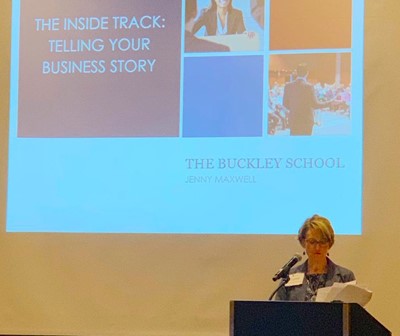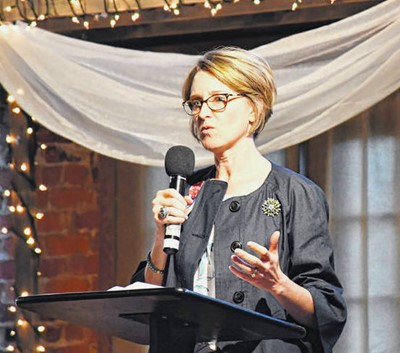
Crystal Morphis is CEO of Creative Economic Development and founder of WEDN, the Women's Economic Development Network.
"Ask for feedback and use it."
– Crystal Morphis sharing her advice for speakers
"It’s easy to react when the largest employer in a community closes leaving hundreds without a paycheck and Main Street vacant. It’s hard to motivate leaders to make public investments that won’t pay dividends for a long time when things seem to be going very well," says Crystal Morphis.
As founder and CEO of Creative Economic Development, she says part of her job is to motivate communities to act before there’s a crisis—and that’s where presentation skills are especially helpful.
 Crystal introducing a communication workshop at the 2019 WEDN conference, an event she created in 2016.
Crystal introducing a communication workshop at the 2019 WEDN conference, an event she created in 2016.
Several years ago, Crystal launched WEDN (Women's Economic Development Network), organizing an annual conference attended by women from around the Southeast. Communication is always a part of the agenda.
"Every economic development professional speaks in public. Without strong public speaking skills, important community and economic opportunities could be missed,” she says. “Strengthening this key communication skill helps economic developers do their jobs better, which helps communities."
 While nerves were her biggest challenge early in her career, these days Crystal is focused on using stories to bring data to life.
While nerves were her biggest challenge early in her career, these days Crystal is focused on using stories to bring data to life.
How does public speaking fit into your work?
Data is an important driver in community investment decisions, but data alone cannot compel people into action. Consultants are typically good at presenting data. Our challenge is telling a story with data and information that compel actions like investing in downtown, infrastructure, incubators, and education.
What’s been your toughest public speaking challenge and how have you overcome it?
Early in my career my toughest public speaking challenge was nerves. I overcame it with practice, practice, and more practice. I made sure I was well-prepared, asked colleagues for feedback, and practiced.
Now, 24 years into my economic development career, my toughest public speaking challenge is framing and delivering a story that motivates people into action. I’m still working on this.
Right now my strategy is to start with why the topic matters, make an audience connection, and wrap up with a call to action. I take success cues from head nodding, note taking, action taking, and follow up comments.
What's your best tip for speakers looking to connect with business leaders?
It’s not about you, it’s about them. Know your audience.
Why are they coming to listen to you? What can you share that they don’t know? How can you connect with the audience, and how can you connect people within the audience? Can your presentation be understood by someone with no background on the topic?






